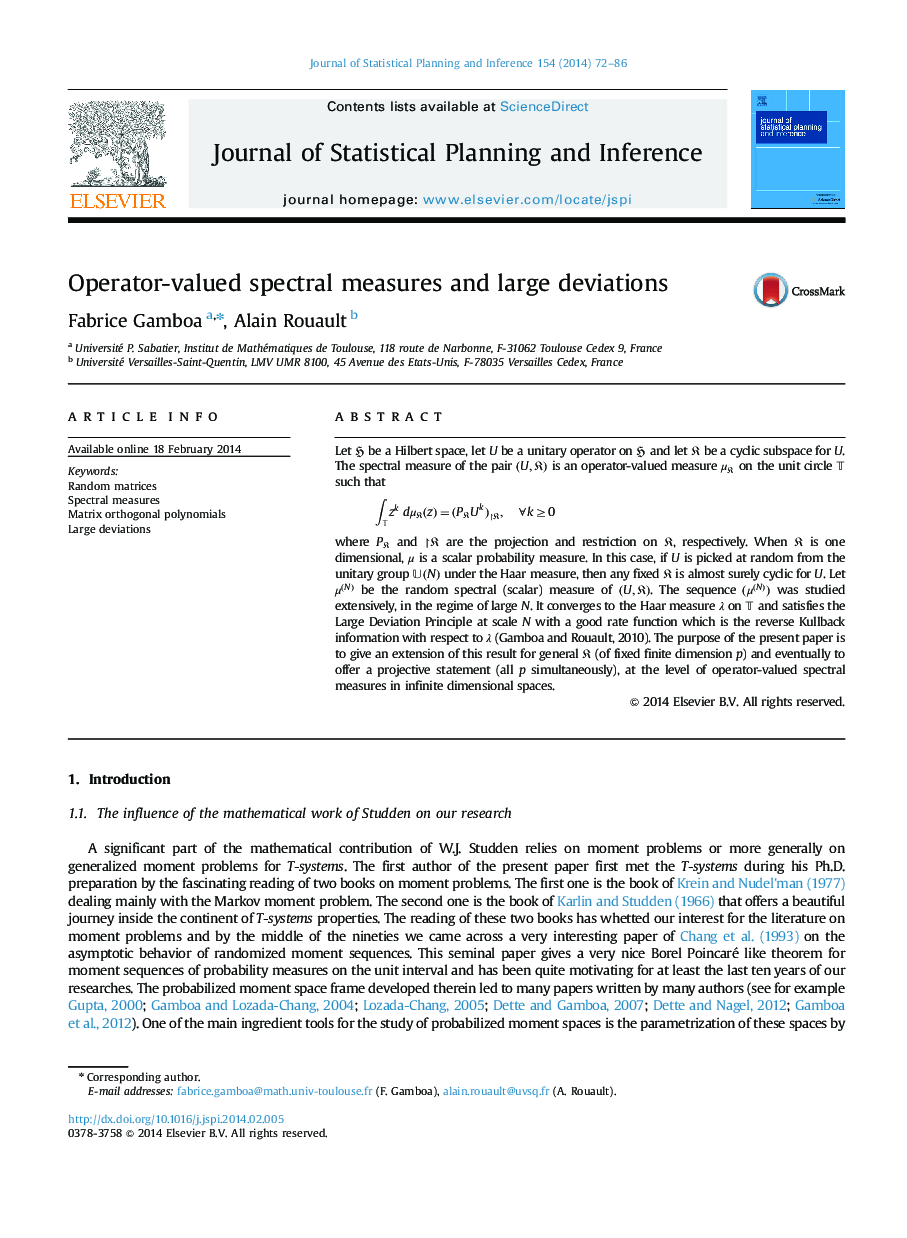| Article ID | Journal | Published Year | Pages | File Type |
|---|---|---|---|---|
| 1148895 | Journal of Statistical Planning and Inference | 2014 | 15 Pages |
Abstract
Let H be a Hilbert space, let U be a unitary operator on H and let K be a cyclic subspace for U. The spectral measure of the pair (U,K) is an operator-valued measure μK on the unit circle T such thatâ«TzkdμK(z)=(PKUk)â¾K,âkâ¥0where PK and â¾K are the projection and restriction on K, respectively. When K is one dimensional, μ is a scalar probability measure. In this case, if U is picked at random from the unitary group U(N) under the Haar measure, then any fixed K is almost surely cyclic for U. Let μ(N) be the random spectral (scalar) measure of (U,K). The sequence (μ(N)) was studied extensively, in the regime of large N. It converges to the Haar measure λ on T and satisfies the Large Deviation Principle at scale N with a good rate function which is the reverse Kullback information with respect to λ (Gamboa and Rouault, 2010). The purpose of the present paper is to give an extension of this result for general K (of fixed finite dimension p) and eventually to offer a projective statement (all p simultaneously), at the level of operator-valued spectral measures in infinite dimensional spaces.
Related Topics
Physical Sciences and Engineering
Mathematics
Applied Mathematics
Authors
Fabrice Gamboa, Alain Rouault,
